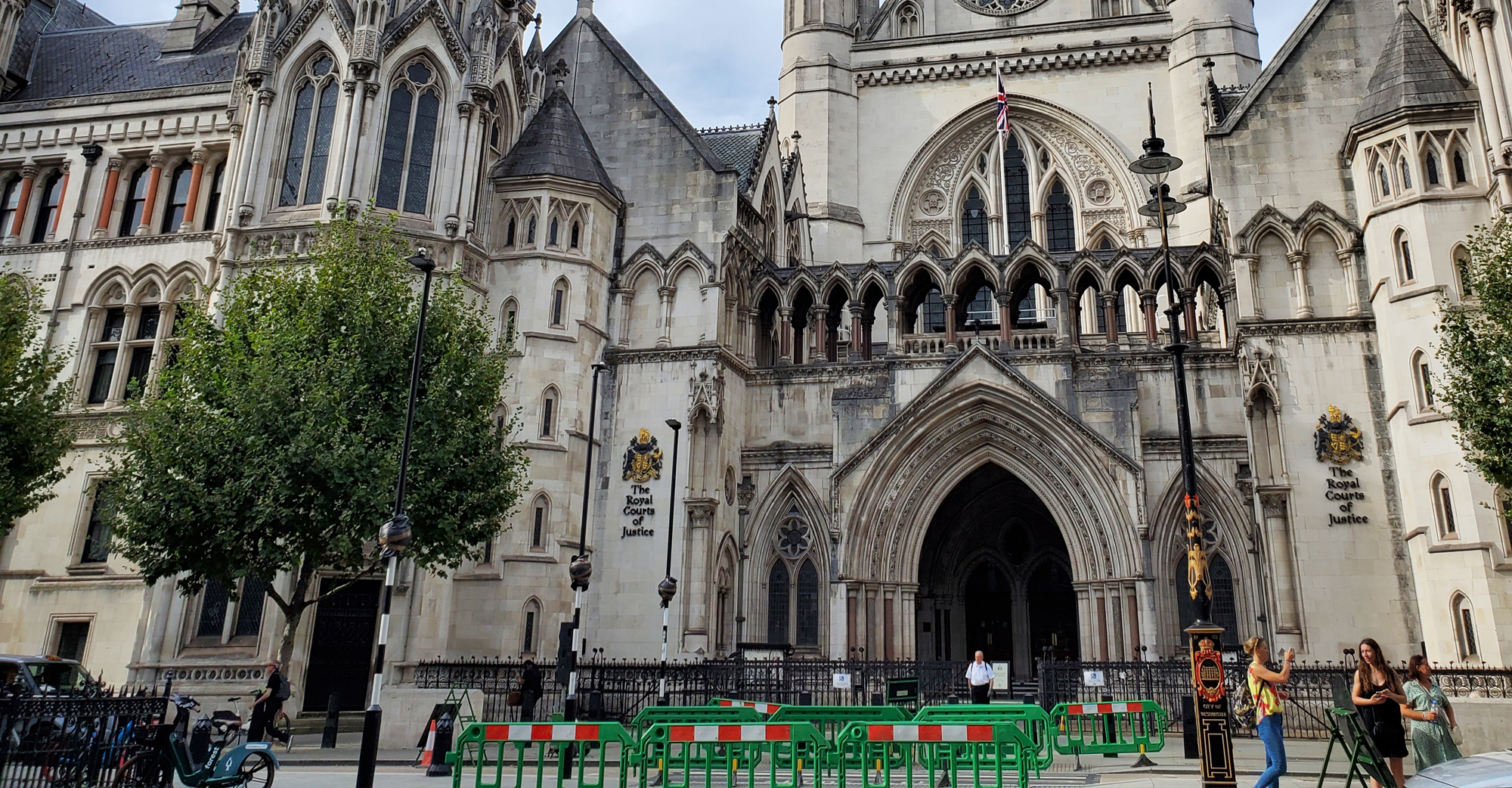What is the birthplace of coffee? Name the nurse referred to as the Angel of the Battlefield. These questions and more are in our 19th installment of Traveling Boy’s Global Travel Trivia game.
Global Trivia 19
You have multiple choices. An explanation and a reference comes after every question. There is no fixed order so you can choose from any of the boxes. The SHADED BOXES are what you already answered. Your final score is at the END. Don't hit REFRESH unless you want to start all over. This is part of a continuing series in Traveling Boy.
Start
Congratulations!
You have completed Global Trivia 19.

You scored %%SCORE%% out of a possible 5 points.
Your performance was: %%RATING%%
Your answers are highlighted below.
Question 1 |
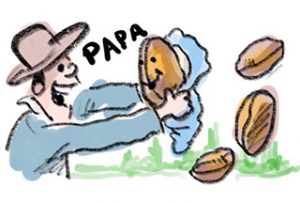
Name the birthplace of coffee
A | Colombia |
B | Costa Rica |
C | Ethiopia |
D | Guatemala |
E | Kenya |
Question 1 :
C. Ethiopia
Abyssenia, now modern day Ethiopia, is considered the birthplace of coffee. Ancient Ethiopian history tells us that around the year 850, there was a goatherd by the name of Kaldi, responsible for discovering the now famous plant and introducing it to Abyssenian culture. He saw his goats eating coffee cherries. Afterwards, he observed a change in their behavior, gaining a high amount of energy and unable to sleep at night.
Upon his arrival at a local monastery, the goatherd presented the coffee berries to the head Monk, ecstatically exclaiming the effect that these berries had: he’d never felt so elated in thought and body after trying one! The head Monk grabbed the berries from Kaldi’s outstretched hand and threw them into the fire, deeming them the “Devil’s work.”
Within moments, the chamber was filled with the smell of roasting coffee. This brought other Monks out to investigate what was making the indelible aroma.
Intrigued, the curious Monks raked the coffee beans from the fire and crushed them in order to put out the molten embers. The Monks poured hot water over the now powdered coffee. The Monks stayed up all night drinking this new concoction, vowing to always drink it in order to stay awake for their nocturnal devotions. News of this event spread, and soon coffee was consumed throughout the country.
Coffee was introduced to the trade world in 1454 when the Mufti of Aden visited Ethiopia and sampled the beverage. Claiming that the drink had cured him of some affliction, his approval carried so much weight amongst his men that soon word of mouth spread like wildfire. His men introduced coffee to the ports in Yemen and Mecca - and coffee was seemingly on the menu everywhere.
Coffee Facts
Abyssenia, now modern day Ethiopia, is considered the birthplace of coffee. Ancient Ethiopian history tells us that around the year 850, there was a goatherd by the name of Kaldi, responsible for discovering the now famous plant and introducing it to Abyssenian culture. He saw his goats eating coffee cherries. Afterwards, he observed a change in their behavior, gaining a high amount of energy and unable to sleep at night.
Upon his arrival at a local monastery, the goatherd presented the coffee berries to the head Monk, ecstatically exclaiming the effect that these berries had: he’d never felt so elated in thought and body after trying one! The head Monk grabbed the berries from Kaldi’s outstretched hand and threw them into the fire, deeming them the “Devil’s work.”
Within moments, the chamber was filled with the smell of roasting coffee. This brought other Monks out to investigate what was making the indelible aroma.
Intrigued, the curious Monks raked the coffee beans from the fire and crushed them in order to put out the molten embers. The Monks poured hot water over the now powdered coffee. The Monks stayed up all night drinking this new concoction, vowing to always drink it in order to stay awake for their nocturnal devotions. News of this event spread, and soon coffee was consumed throughout the country.
Coffee was introduced to the trade world in 1454 when the Mufti of Aden visited Ethiopia and sampled the beverage. Claiming that the drink had cured him of some affliction, his approval carried so much weight amongst his men that soon word of mouth spread like wildfire. His men introduced coffee to the ports in Yemen and Mecca - and coffee was seemingly on the menu everywhere.
Coffee Facts
- Coffee is a fruit, the pit of a berry.
- Coffee has no calories
- Coffee is the world’s 2nd largest traded commodity. Crude oil is first.
- The lighter the bean, the more caffeine.
- Europe imports more coffee than the USA.
- Brazil is the lead exporting country in coffee
- Finland consumes the most coffee per ratio in the world.
- U.S. citizens spend on average $1,092 a year on coffee.
- Millennials spend more on coffee than baby boomers
- Hawaii is the only American state that grows coffee
- Beethoven loved coffee
- Mecca banned coffee, believed to stimulate radical thinking and idleness.
- In ancient Arab culture, a woman could only divorce her husband if he didn’t like her coffee.
- Caffeine is often sold to Coca-Cola.
- Not verified: Yemen claims to be the historical and mythical origin of coffee.
Question 2 |
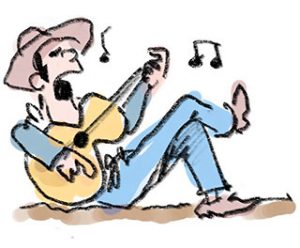
This Traveling Wilburys’ song by Bob Dylan is considered a parody of Bruce Springsteen compositions.
A | If You See Her, Say Hello |
B | Subterranean Homesick Blues |
C | Tangled Up in Blue |
D | Tweeter and the Monkey Man |
E | Visions of Johanna |
Question 2 :
Question 3 |
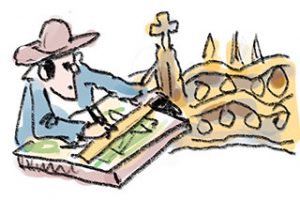
This Barcelonés architect is considered the greatest exponent of Catalan Modernism.
A | Alonzo Cano |
B | Antoni Gaudí |
C | Adolfo Morales de los Ríos |
D | Carlos Morales Quintana |
E | Diego de Riaño |
Question 3 :
B. Antoni Gaudí
Antoni Gaudí (1852 1826): Often times referred to by his nickname, “God’s Architect,” Barcelona architect, Antoni Gaudí, is considered the greatest exponent of Catalan Modernism. As a proud Catalander, he refused to speak Spanish and seldom left his beloved Catalonia. Gaudí’s architecture illustrates his profound passion for nature and devotion to religion. Still ahead of his time, he integrated used ceramic pieces, stained glass and wrought ironwork into his architectural style. Seven of his works have been declared UNESCO World Heritage Sites, and include the still-incomplete Sagrada Família, the most-visited monument in Spain. A visiting bishop once asked him, “Why do you trouble yourself so much about the tops of the towers? After all, no one will ever see them.” “Your Grace,” replied Gaudí, “The angels will see them.” His faith in the Roman Catholic Church intensified towards the end of his life, with his living in a squalid room at Sagrada Família, frantically attempting to finish his astonishingly masterpiece. Still dressed in his work clothes, he would venture out for long walks in nature. In 1926 he was tragically run down by a streetcar and was left to lay on the shoulder of the road. Gaudí desperately waved for assistance from passing vehicles, but was dismissed as a ragged beggar, and died shortly after.
Antoni Gaudí (1852 1826): Often times referred to by his nickname, “God’s Architect,” Barcelona architect, Antoni Gaudí, is considered the greatest exponent of Catalan Modernism. As a proud Catalander, he refused to speak Spanish and seldom left his beloved Catalonia. Gaudí’s architecture illustrates his profound passion for nature and devotion to religion. Still ahead of his time, he integrated used ceramic pieces, stained glass and wrought ironwork into his architectural style. Seven of his works have been declared UNESCO World Heritage Sites, and include the still-incomplete Sagrada Família, the most-visited monument in Spain. A visiting bishop once asked him, “Why do you trouble yourself so much about the tops of the towers? After all, no one will ever see them.” “Your Grace,” replied Gaudí, “The angels will see them.” His faith in the Roman Catholic Church intensified towards the end of his life, with his living in a squalid room at Sagrada Família, frantically attempting to finish his astonishingly masterpiece. Still dressed in his work clothes, he would venture out for long walks in nature. In 1926 he was tragically run down by a streetcar and was left to lay on the shoulder of the road. Gaudí desperately waved for assistance from passing vehicles, but was dismissed as a ragged beggar, and died shortly after.
Question 4 |
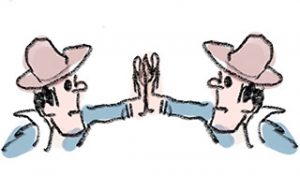
Name the actor who DID NOT play two different characters in the same film.
A | Nicolas Cage |
B | Tom Hardy |
C | Jeremy Irons |
D | Scarlett Johansson |
E | Jack Nicholson |
F | Barbra Streisand |
Question 4 :
F. Barbra Streisand
Barbra Streisand has never played more than one character in a film, but her résumé is immensely impressive: a vocalist, stage and screen performer, film director and producer, and winner of five Emmy awards. After her splashy debut on Broadway in 1962’s I Can Get It For You Wholesale, Barbra Streisand played entertainer Fanny Brice in the 1964 Broadway musical Funny Girl. Her 1965 television special, My Name is Barbra, won five Emmy awards and made her a small-screen star. In 1968 she went herself one better, winning the best actress Oscar for William Wyler‘s film version of Funny Girl. A legendary case of stage fright kept Streisand from performing publicly for the next two decades, but in those years she remained a top star in recording and movie studios. She wrote, directed and starred in 1983’s Yentl and 1991’s The Prince of Tides (with Nick Nolte). In 1986 she began singing in public again, and in 1998 she married actor James Brolin. As of 2009, she had won more gold records than any other performer in history and the top-selling female artist in American music recording history. While not making movies or singing, Streisand kicks up dust in the political arena as an outspoken Democrat.
The following played more than one character in the below films.
Nicolas Cage: Adaptation (2002); Cage plays identical twin screenwriters, Charlie Kaufman / Donald Kaufman
Tom Hardy: Legend (2015); Hardy plays identical twin gangsters, Reggie Kray / Ron Kray
Jeremy Irons: Dead Ringers (1998); Irons plays identical twin gynecologists , Beverly Mantle / Elliot Mantle.
Scarlett Johansson: The Island (2005); Johansson plays two different characters, Jordan Two Delta and Sarah Jordan.
Jack Nicholson: Mars Attacks! (1996); Nicholson plays two different characters, US President James Dale and nutcase Art Land.
Interesting note: John Travolta and Nicholas Cage both played two characters in John Woo’s Face Off.
Barbra Streisand has never played more than one character in a film, but her résumé is immensely impressive: a vocalist, stage and screen performer, film director and producer, and winner of five Emmy awards. After her splashy debut on Broadway in 1962’s I Can Get It For You Wholesale, Barbra Streisand played entertainer Fanny Brice in the 1964 Broadway musical Funny Girl. Her 1965 television special, My Name is Barbra, won five Emmy awards and made her a small-screen star. In 1968 she went herself one better, winning the best actress Oscar for William Wyler‘s film version of Funny Girl. A legendary case of stage fright kept Streisand from performing publicly for the next two decades, but in those years she remained a top star in recording and movie studios. She wrote, directed and starred in 1983’s Yentl and 1991’s The Prince of Tides (with Nick Nolte). In 1986 she began singing in public again, and in 1998 she married actor James Brolin. As of 2009, she had won more gold records than any other performer in history and the top-selling female artist in American music recording history. While not making movies or singing, Streisand kicks up dust in the political arena as an outspoken Democrat.
The following played more than one character in the below films.
Nicolas Cage: Adaptation (2002); Cage plays identical twin screenwriters, Charlie Kaufman / Donald Kaufman
Tom Hardy: Legend (2015); Hardy plays identical twin gangsters, Reggie Kray / Ron Kray
Jeremy Irons: Dead Ringers (1998); Irons plays identical twin gynecologists , Beverly Mantle / Elliot Mantle.
Scarlett Johansson: The Island (2005); Johansson plays two different characters, Jordan Two Delta and Sarah Jordan.
Jack Nicholson: Mars Attacks! (1996); Nicholson plays two different characters, US President James Dale and nutcase Art Land.
Interesting note: John Travolta and Nicholas Cage both played two characters in John Woo’s Face Off.
Question 5 |
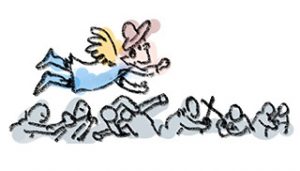
This famous nurse was coined the "Angel of the Battlefield" during the U.S. Civil War.
A | Clara Barton |
B | Mary Breckinridge |
C | Florence Nightingale |
D | Margaret Sanger |
E | Mabel Keaton Staupers |
Question 5 :
A. Clara Barton
Clara Barton is known as America's "Angel of the Battlefield." While nursing during the Civil War, Barton was deeply affected by the lack of medical supplies available to the wounded soldiers. Barton took action and took medical supplies to the battlefield, nursing the wounded where they lay. Barton also founded the American Red Cross in 1881 and led the organization until 1904.
Mary Breckinridge became an RN in 1910 and introduced nurse-midwifery to the United States after spending time in France after World War I with the American Committee for Devastated France. Breckinridge founded the Frontier Nursing Service in 1925, providing prenatal and postnatal nurse-midwifery care to women in Kentucky's far-removed Appalachian Mountains.
Florence Nightingale certainly holds the honor of being the most famous nurse on our list. She became a nurse in 1851 and traveled to Turkey to aid British soldiers during the Crimean War. Devastated by the poor conditions of both the facilities and the soldiers, Nightingale took action, tending to the soldiers and cleaning up the hospitals. Many survived because of Nightingale's proactive approach.
Margaret Sanger witnessed many deaths resulting from botched abortions while nursing in New York City's Lower East Side. Sanger defied the authorities and opened a birth control clinic in Brooklyn in 1916. She founded the American Birth Control League in 1942, which eventually became the Planned Parenthood Foundation, and she helped the development of the first birth control pill.
Mabel Keaton Staupers fiercely advocated for racial equality in nursing. She served as a secretary to Mahoney's NACGN and brought African-American nurses into the armed forces during World War II. In fact, in 1945, Staupers won a battle against the military that led to race no longer playing a role in nurses being accepted into the military.
Clara Barton is known as America's "Angel of the Battlefield." While nursing during the Civil War, Barton was deeply affected by the lack of medical supplies available to the wounded soldiers. Barton took action and took medical supplies to the battlefield, nursing the wounded where they lay. Barton also founded the American Red Cross in 1881 and led the organization until 1904.
Mary Breckinridge became an RN in 1910 and introduced nurse-midwifery to the United States after spending time in France after World War I with the American Committee for Devastated France. Breckinridge founded the Frontier Nursing Service in 1925, providing prenatal and postnatal nurse-midwifery care to women in Kentucky's far-removed Appalachian Mountains.
Florence Nightingale certainly holds the honor of being the most famous nurse on our list. She became a nurse in 1851 and traveled to Turkey to aid British soldiers during the Crimean War. Devastated by the poor conditions of both the facilities and the soldiers, Nightingale took action, tending to the soldiers and cleaning up the hospitals. Many survived because of Nightingale's proactive approach.
Margaret Sanger witnessed many deaths resulting from botched abortions while nursing in New York City's Lower East Side. Sanger defied the authorities and opened a birth control clinic in Brooklyn in 1916. She founded the American Birth Control League in 1942, which eventually became the Planned Parenthood Foundation, and she helped the development of the first birth control pill.
Mabel Keaton Staupers fiercely advocated for racial equality in nursing. She served as a secretary to Mahoney's NACGN and brought African-American nurses into the armed forces during World War II. In fact, in 1945, Staupers won a battle against the military that led to race no longer playing a role in nurses being accepted into the military.
Once you are finished, click the button below. Any items you have not completed will be marked incorrect.
Get Results
There are 5 questions to complete.
← |
List |
→ |
Return
Shaded items are complete.
| 1 | 2 | 3 | 4 | 5 |
| End |
Return
You have completed
questions
question
Your score is
Correct
Wrong
Partial-Credit
You have not finished your quiz. If you leave this page, your progress will be lost.
Correct Answer
You Selected
Not Attempted
Final Score on Quiz
Attempted Questions Correct
Attempted Questions Wrong
Questions Not Attempted
Total Questions on Quiz
Question Details
Results
Date
Score
Hint
Time allowed
minutes
seconds
Time used
Answer Choice(s) Selected
Question Text
All done
Deplorable! You need to travel more! This is pathetic!
Deplorable! You need to travel more! This is pathetic!
Embarrassing! Keep trying! We know you're better than that. Play the game again.
Not that bad! But not good either. Play the game again.
Pretty good ... but not perfect.
Perfect! Are you brilliant traveler or what?
